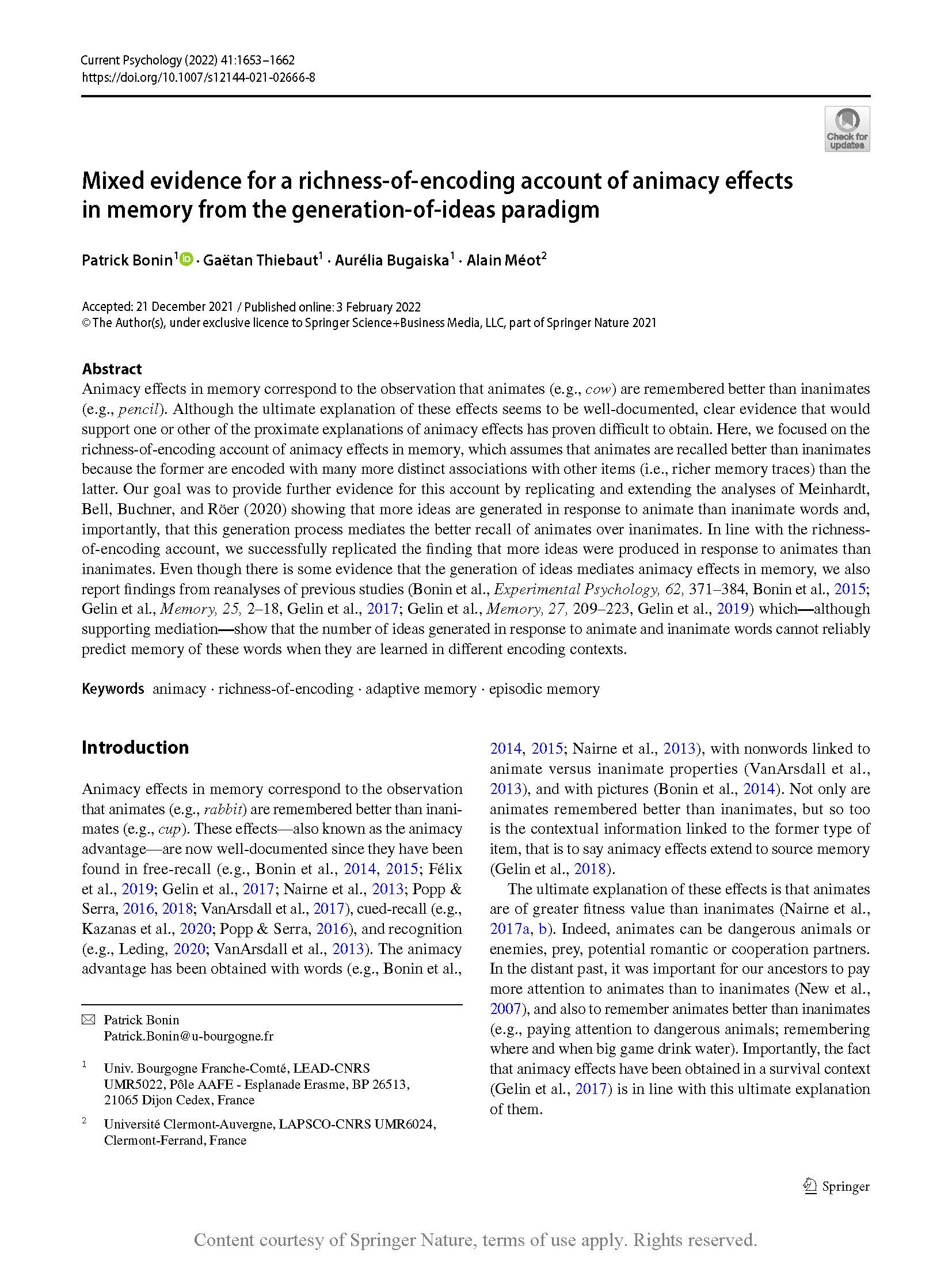Animacy effects in memory correspond to the observation that animates (e.g., cow) are remembered better than inanimates (e.g., pencil). Although the ultimate explanation of these effects seems to be well-documented, clear evidence that would support one or other of the proximate explanations of animacy effects has proven difficult to obtain. Here, we focused on the richness-of-encoding account of animacy effects in memory, which assumes that animates are recalled better than inanimates because the former are encoded with many more distinct associations with other items (i.e., richer memory traces) than the latter. Our goal was to provide further evidence for this account by replicating and extending the analyses of Meinhardt, Bell, Buchner, and Röer (2020) showing that more ideas are generated in response to animate than inanimate words and, importantly, that this generation process mediates the better recall of animates over inanimates. In line with the richnessof-encoding account, we successfully replicated the finding that more ideas were produced in response to animates than inanimates. Even though there is some evidence that the generation of ideas mediates animacy effects in memory, we also report findings from reanalyses of previous studies (Bonin et al., Experimental Psychology, 62, 371–384, Bonin et al., 2015; Gelin et al., Memory, 25, 2–18, Gelin et al., 2017; Gelin et al., Memory, 27, 209–223, Gelin et al., 2019) which—although supporting mediation—show that the number of ideas generated in response to animate and inanimate words cannot reliably predict memory of these words when they are learned in different encoding contexts.
Mixed evidence for a richness-of-encoding account of animacy effects in memory from the generation-of-ideas paradigm
